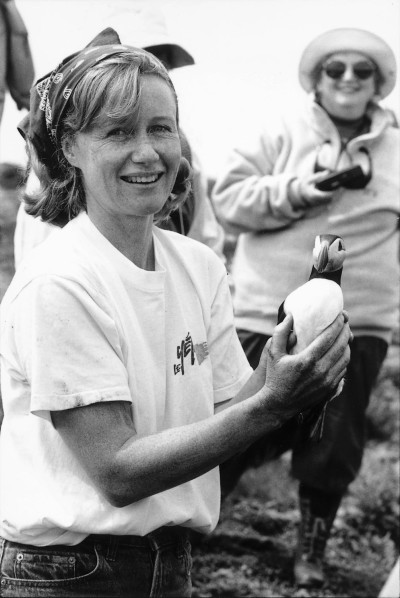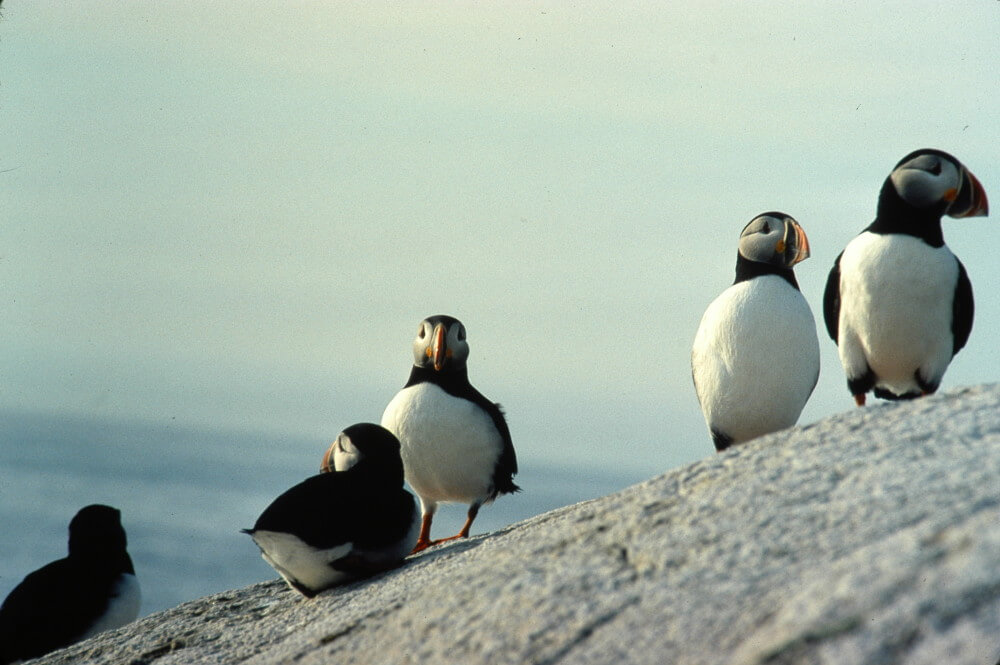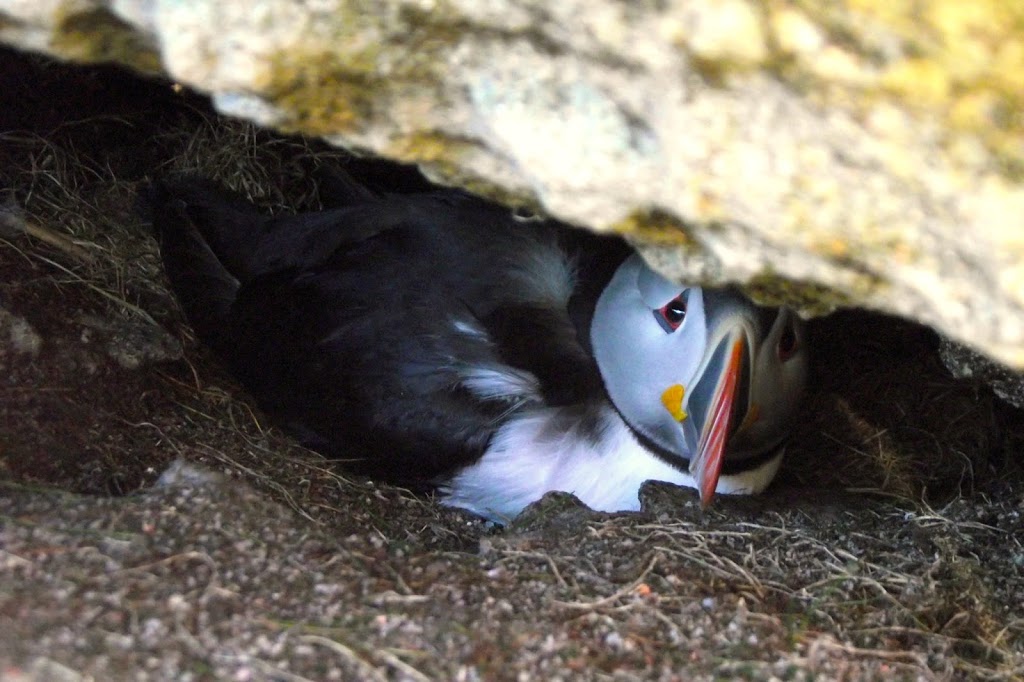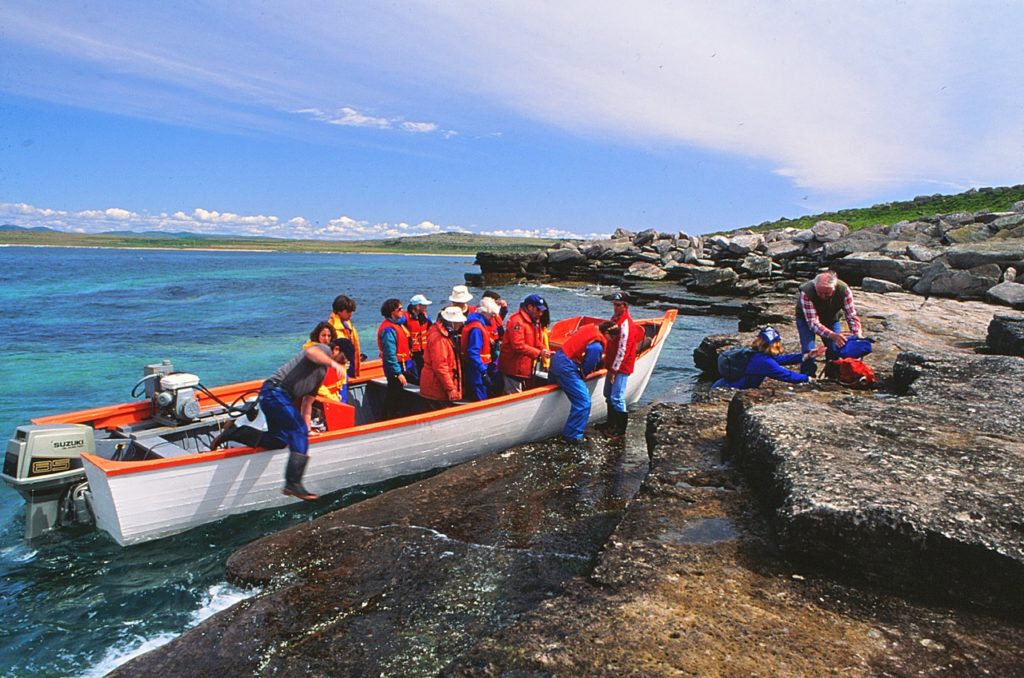 In 1978, QLF founder Rev. Bob Bryan enlisted Dr. Kathleen Blanchard to address the seabird decline problem by engaging local residents and helping them to understand the consequences of excessive seabird and egg harvesting, which at the time was the main threat to the breeding colonies.
In 1978, QLF founder Rev. Bob Bryan enlisted Dr. Kathleen Blanchard to address the seabird decline problem by engaging local residents and helping them to understand the consequences of excessive seabird and egg harvesting, which at the time was the main threat to the breeding colonies.
- Under her direction, the program grew into a comprehensive, well-documented community-based approach aimed at benefiting both wildlife and people.
- It not only succeeded in helping to bring a halt to threats on the breeding grounds, but also contributed to dramatic increases in populations of several species, including Razorbill, Common Eider, and Atlantic Puffin.
- Its lasting contribution has been to help shape a new generation of conservation-minded residents who are dedicated to the stewardship of their resources.
The program’s unique approach to conservation, which was built on a foundation of QLF presence in the region, was key to its effectiveness. This approach was: work closely with the people on a common goal, affirm the cultural values compatible with conservation, and encourage hands-on learning so as to cultivate stewardship.
- Applying this model, more than 100 dedicated QLF Interns, working throughout the program’s 20-year span, gained the respect of residents while learning about their valued traditions that had evolved from centuries of isolation and the need for self-reliance.
- Meanwhile, partners in federal and provincial departments, foundations, and NGOs contributed greatly to the program’s success, particularly after participating in QLF study tours of the region, where they learned first-hand from local people.

The Marine Bird Conservation Program operated as follows:
- The original project was designed with three objectives:
- To teach seabird biology and conservation to local peoples;
- To promote conservation attitudes in the region; and
- To establish local support for conservation.
- The project:
- Ran week-long education courses about seabirds for youth,
- Trained leading community members to take over teaching responsibilities, and
- Implemented a gradual takeover of the program and its conservation activities by local people.
- Dr. Blanchard monitored the outcomes of her programming quantitatively and qualitatively, allowing her to concretely demonstrate the positive impacts to be gained from taking such a community-based approach.
The program became a model for how to apply education and stewardship to conventional strategies for wildlife management that could be shared and implemented worldwide. The program made it abundantly clear that an area’s sociocultural environment plays a vital role in conservation challenges. As such, education and programs aimed at expanding knowledge and attitudes can be crucial.

In time, the Marine Bird Conservation Program became recognized internationally as a model of community-based conservation, prompting projects in other regions of Canada and the world to adopt some of the strategies that had proven effective on the Quebec North Shore.
- Many of the QLF Interns who had served in the program went on to become leading conservation practitioners and researchers, holding influential positions in several conservation organizations in Canada and the U.S.
- Blanchard and QLF wish to recognize with heart-felt appreciation the tremendous contributions of Interns to the Marine Bird Conservation Program and to QLF.
Dr. Blanchard has continued to work with QLF on a series of related biodiversity conservation projects based on the legacy and model of the original Marine Bird Conservation Program.
- These projects continue to apply the community-based model she pioneered in the ‘70s.
- Two notable projects, the Piping Plover and Hare Bay projects, are outlined in more detail under the Biodiversity programs page.
QLF’s mission includes commitments to promote global leadership development, support the rural communities and environment of eastern Canada and New England, and to create models for stewardship of natural resources and cultural heritage that can be shared worldwide. Dr. Blanchard’s cutting-edge community-based conservation work has, for decades, successfully accomplished just that.







